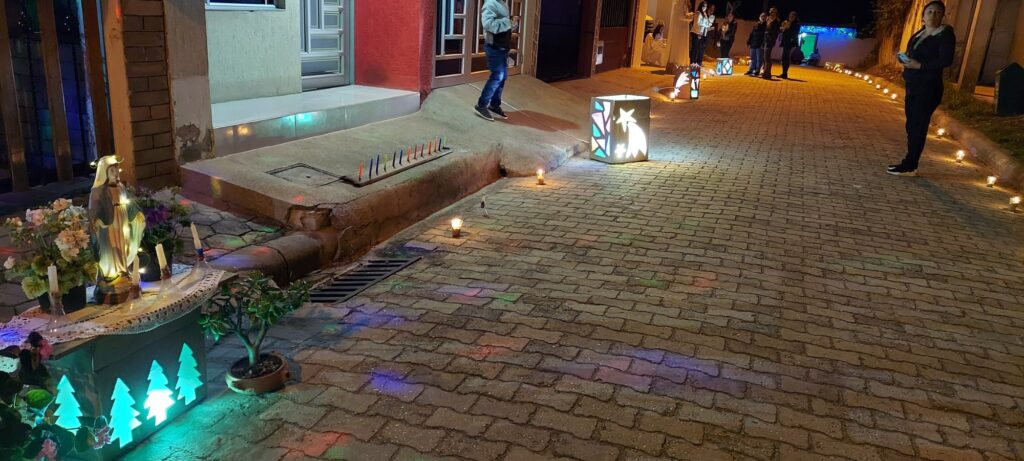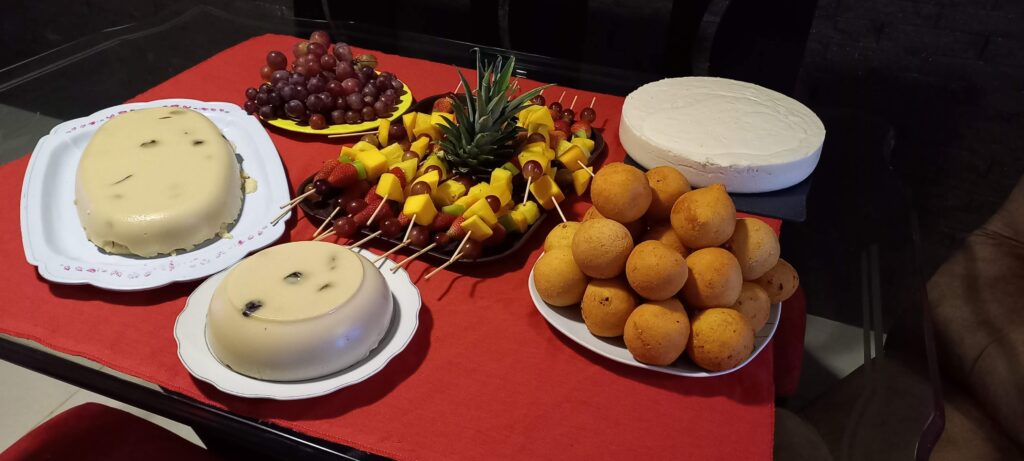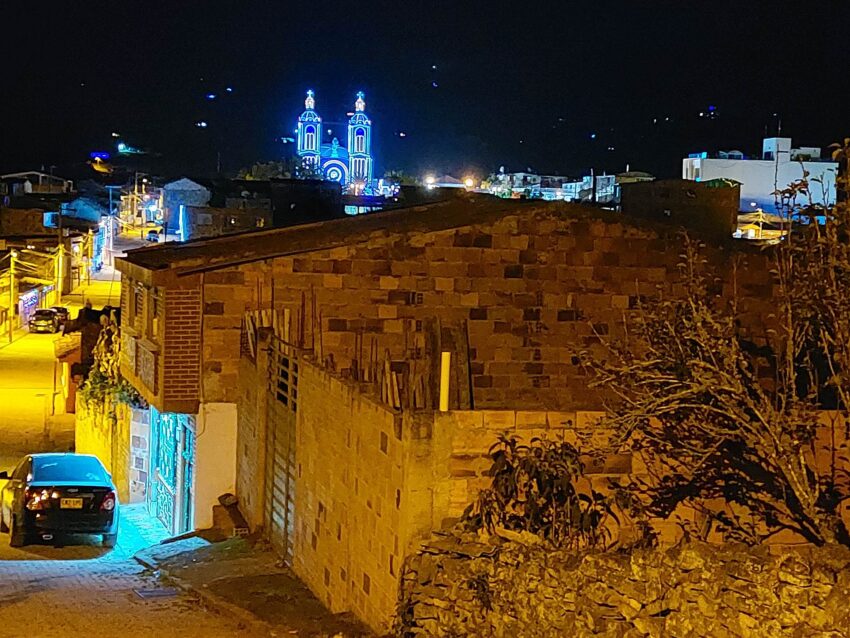If you think Christmas is a big deal in the US, you’ll be blown away by Colombia’s Christmas traditions. As a Catholic country, the celebrations are centered around the Virgin Mary and the birth of Christ. But there is also a lot of dancing and drinking, along with a small dose of debauchery.
December 7: Noche de las Velitas
The Christmas season kicks off with la Noche de las Velitas. Every city and pueblo throughout Colombia celebrates the Night of the Little Candles by lighting up the entire town, all together, on December 7th. Neighbors line the streets with candles and handmade faroles (ornamental lanterns), parade through the streets carrying candles, and gather in the town square to witness the illumination of the Christmas lights, watch live performances, cheer on a fireworks display, and drink beer and aguardiente while dancing to live music long past midnight.

Here in my small pueblo in the Boyacá region, the stunningly beautiful church at the center of town was lit up like an amusement park ride, with constantly changing colors. The surrounding trees were draped in lights, while the fountains and buildings were decorated with lit-up figures of candy canes, flowers, and animals. Several elaborate nativity scenes were set up around town, with Maria, José, a host of farm animals, and three wise men waiting expectantly for the baby Jesus to arrive on Christmas Eve.

My fellow Peace Corps volunteer (and next-door-neighbor), Bobby, and I were commandeered by our host families to dress as angels and carry my 6-year-old host sister – dressed as the Virgin Mary – in a throne on our shoulders as the candle-lit desfile (procession) passed our homes. You would have thought we were actual angels, based on the number of photos and videos taken of us by nearly every single citizen of the town, who acted as if they had never seen such a spectacle.
December 16 to 24: Novena de Aguinaldos
Starting on the 16th of December, each community hosts a nine-day religious celebration (novena) to celebrate the baby Jesus (aguinaldos). Traditionally, friends and family gather each night to eat, sing, and recite the novena of aguinaldos prayers, which were written by a Quito-born priest at the request of the founder of a school in Bogotá and first published in 1743.
In our town, the nightly celebration began with a desfile at 6 pm, followed by a misa (Catholic Mass) at 7 pm, then performances and dancing in the town square, starting around 8:30 pm. Each night featured carrozas (parade floats) and performances by different veredas (sections of the community). Performances ranged from traditional dances and holiday songs to recited poems and original comedy skits.
Some of the more surprising presentations included a fake cock-fighting depiction with a live rooster – set to a song about the same topic; a drunken nightclub brawl acted out by men and women in drag; and a comical cooking competition that included a live chicken that escaped from a soup pot and had to be chased down by spectators.
On the final night, Christmas Eve, the celebration took place in the arena, following a parade of all the carrozas. The favorite performances from the previous nights returned for an encore, and cash prizes were awarded. A cameraman filmed the performances, which were aired on the community TV station.

December 24: La Cena Navideña
Around 9 pm on Christmas Eve, my family hosted a Navideña dinner for 18 people. The multi-course meal started with Natilla, an eggless custard made with dried fruit and topped with a blackberry sauce. Then, they passed the Buñuelos, deep-fried, racquetball-sized fritters that are slightly sweet and completely addictive. Next came the pinchos de fruta: bamboo skewers stacked with pineapple, mango, kiwi, and grapes. The lasagne course followed, featuring layers of shredded chicken, shredded beef, and ground beef covered in melted cheese. Afterwards, we ate Postre de Guanabana, a custardy, congealed cake made from heavy cream and the sweet, tangy white fruit also known as soursop. Finally, we passed tiny shots of whisky around the table before the family members filed out to enjoy the rest of the community celebration, which lasted into the early hours of December 25.
On Christmas Day, the children and I played UNO for more hours than I cared to count, using the Colombian UNO deck I gave them as a present. But the true gift was the opportunity to share in the rich cultural tradition of a Colombian family Christmas.
